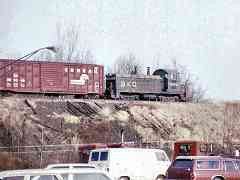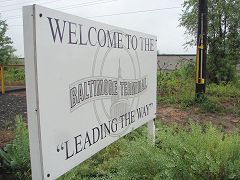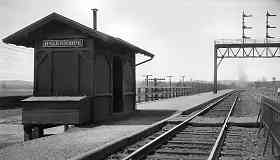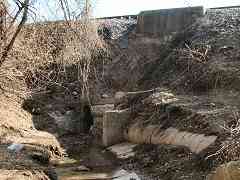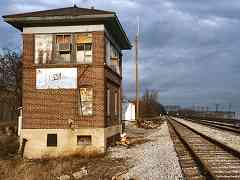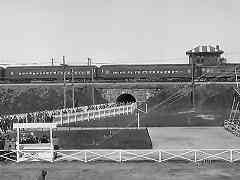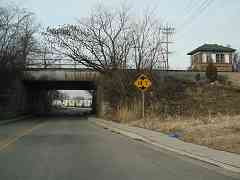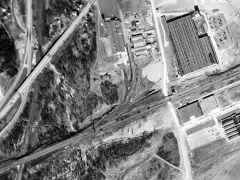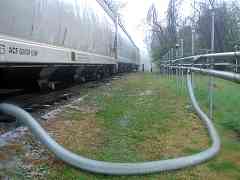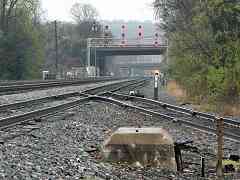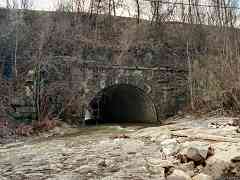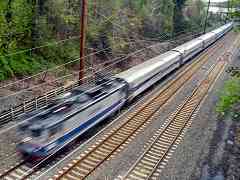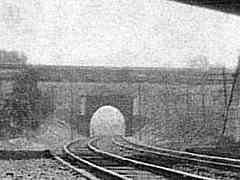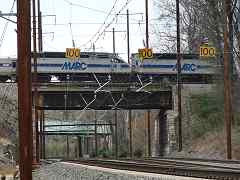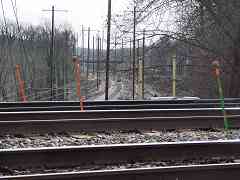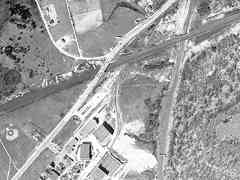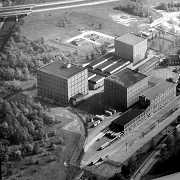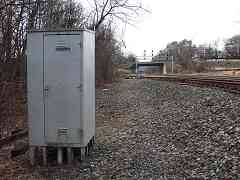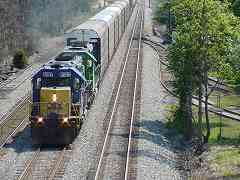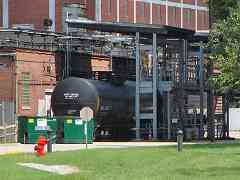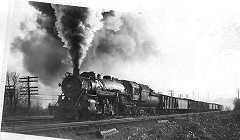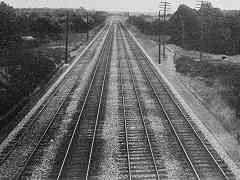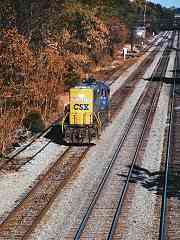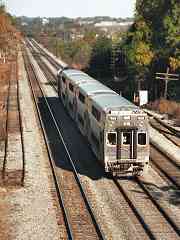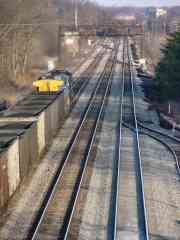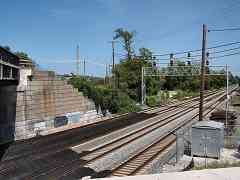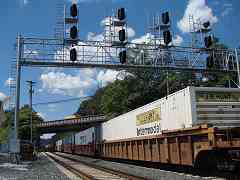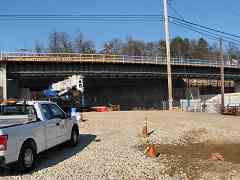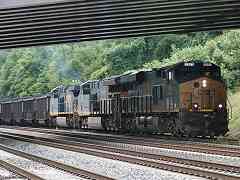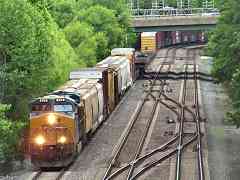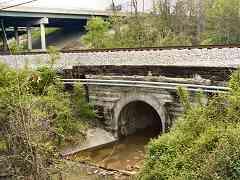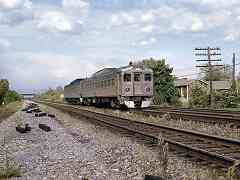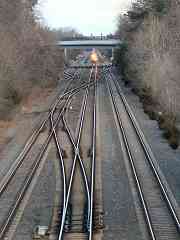|
The B&O's early engineers were overly concerned about keeping their
railroad level. They feared the steel wheels of steam engines would
slip on steep grades, so they restricted the OML to a mere 0.7%
grade. To keep things that flat, substantial fills were needed at
certain locations, such as Gadsby's Run (also known as Herbert's Run).
Here a 57-foot fill was built over a small arched bridge.
As at the Deep Cut, all the ncecessary earth moving was done by hand.
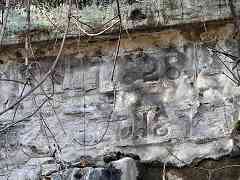 This is the only B&O stone bridge to display 3 construction dates,
the oldest 1828, the next 1875 when it was widened to support more
tracks, and the third (not shown) 19??. The digits look to be formed
by hand in a surface layer of concrete. The third date is embossed in
concrete that has not survived well, leaving its last two digits tough
to decipher. The third date might coincide with B&O's preparation
of this area to host 1927's Fair of the Iron Horse.
This is the only B&O stone bridge to display 3 construction dates,
the oldest 1828, the next 1875 when it was widened to support more
tracks, and the third (not shown) 19??. The digits look to be formed
by hand in a surface layer of concrete. The third date is embossed in
concrete that has not survived well, leaving its last two digits tough
to decipher. The third date might coincide with B&O's preparation
of this area to host 1927's Fair of the Iron Horse.
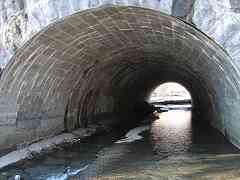 In an act of preservation, for the 1875 widening the new portion
was built inside, and the original stone arch retained and moved
outward. It's easy to see this by walking part way into the tunnel.
In the foreground, an inexplicably odd assortment of rocks embedded
in concrete litters the streambed, perhaps remnants of a concrete
path from the grounds of the Fair of the Iron Horse. This is one
of the easiest OML arched stone bridges to access. Simply drive to
the west end of Hollins Ferry Road, and walk a short distance toward
the stream.
In an act of preservation, for the 1875 widening the new portion
was built inside, and the original stone arch retained and moved
outward. It's easy to see this by walking part way into the tunnel.
In the foreground, an inexplicably odd assortment of rocks embedded
in concrete litters the streambed, perhaps remnants of a concrete
path from the grounds of the Fair of the Iron Horse. This is one
of the easiest OML arched stone bridges to access. Simply drive to
the west end of Hollins Ferry Road, and walk a short distance toward
the stream.
|
